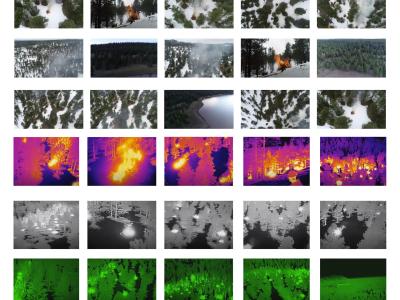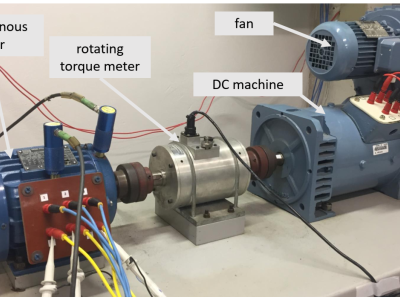Thermal-based Occupancy Data to HVAC Control

- Citation Author(s):
-
Hamid Rajabi
- Submitted by:
- Hamid Rajabi
- Last updated:
- DOI:
- 10.21227/y3dv-8b19
 1446 views
1446 views
- Categories:
- Keywords:
Abstract
This dataset is associated with TODOS: Thermal sensOr Data-driven Occupancy Estimation System for Smart Buildings. It is a novel system for estimating occupancy in intelligent buildings, TODOS uses a low-cost, low-power thermal sensor array along with a passive infrared sensor. We introduce a novel data processing pipeline that allows us to automatically extract features from the thermal images using an artificial neural network. Through an extensive experimental evaluation, we show that TODOS provides occupancy detection accuracy of 98% to 100% under different scenarios. In addition, it solves the issue of occupancy over/under-counting by overlapping sensing areas when using multiple thermal sensors in large rooms. This is done by treating the entire area being sensed as a single input thermal image instead of partitioning the area into multiple thermal images individually processed. Furthermore, TODOS introduces a data augmentation technique that allows the generation of training data for rooms of different sizes and shapes, without requiring specific training data from each room. Using these data, TODOS can train specifically designed neural networks optimized for any room size and shape, and achieve almost the same level of occupancy detection accuracy in rooms where experimental labeled training data is available, making it a viable solution that generalizes to the different rooms in large buildings.
This dataset contains time series logs of 8 by 8 heat map images collected by thermal sensors spread out over the entire room. Each sensor mote contains a grid-eye sensor to collect thermal images underneath, and a PIR sensor to duty cycle the thermal sensor. The output data would be occupancy count for the entire room being used for smart building energy control. There are 10 rooms/zones tested with different geometrical shapes and sizes, so different number of sensors and sensor arrangments.
Instructions:
For each room, the data logs of the sensors (indicated by node id), need to be passed through the "thermal background" and "background subtraction" presented in https://dl.acm.org/doi/10.1145/2528282.2528301. Then they need to be concatenated based on the given sensor arrangement for each room. The output will get into a ResNet-18 and/or VGG-16 neural network classifier where it is already augmented by data augmentation technique. Finally, it is passed through an EWMA filter to deliver the total occupancy count for the entire room.
*** The camera-ready version of the paper has been recently submitted. The full instructions with more details will be coming upon publication of the paper ***








It 's interesting, but I still have some doubts about the details of your dataset. Can you provide more dataset information Thank you